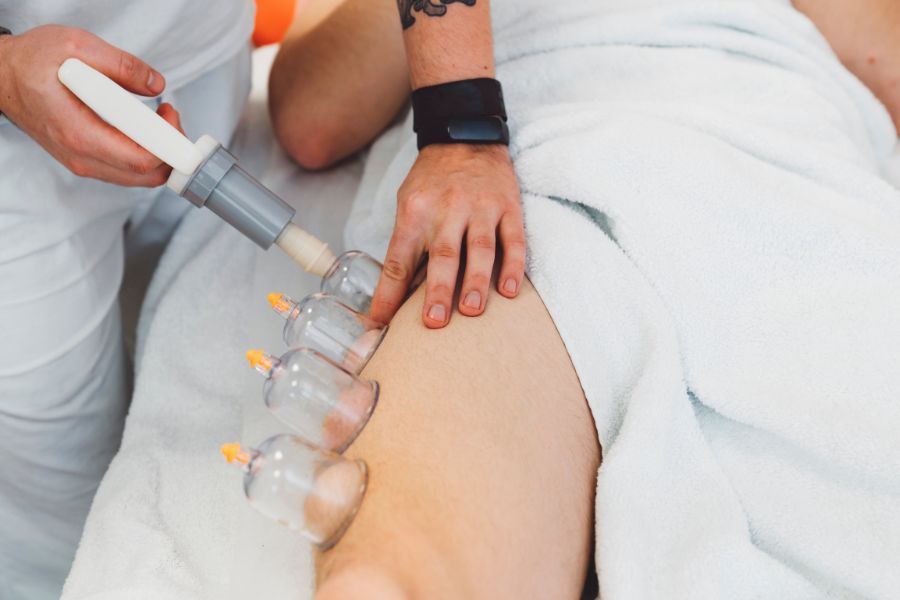Football Recovery Checklist: The Key to a Better Game


Recovery is, without a doubt, an essential part of football injury prevention.
Recovery is a process that helps restore an individual’s psychological and physiological capacities after undertaking a major effort. Its purpose is to help an individual build the ability to repeat highly intensive efforts regularly.
In addition to that, proper recovery is critical in adapting to constant stresses and strain. Combined, these effects can optimize an athlete’s performance, at the same time reducing the risk of potential injury.
Research on the impact of recovery on performance has demonstrated that an adequate balance between stress and recovery is essential. It is a necessary pre-condition for athletes who are striving to achieve continuous high-level performance.
Use FlexBeam for Faster Recovery
Football is a particularly demanding sport due to a combination of taxing physical activities. These include sprinting, jumping, tackling, changing direction and running speed, dribbling, shooting, and passing. Consequently, that creates a post-match fatigue characterized by muscle damage, mental fatigue, dehydration and glycogen depletion.
It’s important to note that the length of the recovery process is specific to each football player. It is also dependent on a variety of factors, including:
- age
- gender
- training status
- playing surface
- quality of the opponent
- and more.
That’s why football players implement a variety of recovery strategies, specific to their training and tailored to their individual needs.
In this article, we’re going to address strategies for football recovery as the key to a better game.
Stretching
Stretching can play a role in muscle recovery as it can help increase the body’s range of motion. Consequently, it creates greater flexibility and a freer pattern of movement. What’s more, studies have shown that stretching is not only useful after strenuous physical activity, but also as a warm up prior to playing.
Cupping Therapy
Therapy using suction cups has become more popularly practiced by the elite athletes in recent years. It is used for purposes of recovery post-match or post-intensive training. Cupping therapy works by helping to improve blood flow and decrease muscle pain and stiffness. There is scientific evidence that cupping therapy is effective in reducing muscle fatigue. Its delayed effect (24 hours after use) seems to be to be more significant than its initial effect.

Hydration and Nutrition
This may sound obvious, but hydration and nutrition are critical for successful football recovery. Rehydration, carbohydrate and protein consumption after a match are highly effective in replenishing water reserves, repairing muscle damage, as well as improving mental performance and reducing the feeling of fatigue. This, in turn, leads to an improvement in subsequent exercise performance.
Massage
Though there is little scientific evidence on the recovery effects of a massage, it’s one of the most popular techniques for preparing athletes for competition and to aid recovery after it. The main purpose of a massage is to heat up the tissues, thus reducing the stiffness in muscles and tendons. However, research suggests that these effects are temporary, so massage may not be the most effective football recovery strategy.

Cryotherapy
Treatments with ice and/or cold water have been around since ancient times. They were popular due to their analgesic and anti-inflammatory effects, as well as ability to regenerate tissue. Studies have shown that cryotherapy treatments are most effective when applied within the first few hours after a match or a more intense training session, rather than after a routine training or exercise. It is necessary to immerse the whole body in cold baths to gain the full benefits of the cold therapy.
Get Your Own Near-Infrared Therapy Device
Sleep
Sleep is absolutely essential for one’s physical and mental wellbeing. It’s no surprise to say that it’s also integral to the body’s recovery after intense efforts like football. But the problem is that due to high stress, many professional athletes tend to have trouble sleeping and suffer from excessive daytime sleepiness. That’s why they must adopt individualized strategies that promote sleep and recovery.
Near-Infrared Light Therapy for Football Recovery
Near-infrared light therapy uses LEDs to produce light that imitates natural sunlight at dusk and dawn, minus the harmful UV rays. Combining therapy with near-infrared light (with wavelengths of 700 to 2,500 nanometers) and red light (630 to 700 nanometers) produces a wide array of health benefits that can also help in football recovery.
Mechanisms of Near-Infrared Therapy for Recovery
Near-infrared light therapy can help improve sleep patterns by triggering the release of melatonin, a hormone that regulates sleep and wake patterns, which can improve sleep quality and recovery, as demonstrated in this study of elite Chinese female basketball players.
Severe muscle fatigue can have a significant impact on sports performance and joint stability and increase the risk of sports injuries. Near-infrared light therapy is effective in delaying the development of skeletal muscle fatigue, as well as in minimizing the effects of delayed onset muscle soreness, a painful condition that is particularly familiar to elite or novice athletes.
And that’s not all. Near-infrared light can penetrate approximately an inch and a half beyond the surface of the skin, thus helping to accelerate bone repair and increase bone formation, relieve chronic pain and stimulate healing, and have anti-inflammatory effects, all of which can contribute to drastically improved and accelerated recovery.
The best part is that, unlike with massages, cryotherapy, or cupping therapy, you can apply near-infrared light therapy by yourself and in the comfort of your own home through the use of a conveniently portable and highly affordable device like the Flexbeam. Because of this, you can use near-infrared light therapy whenever you like, whether you are a professional football player or you play the sport for fun on the weekends.
These are some of the most effective football recovery strategies. However, it’s always important to keep in mind that what works for one athlete may not work as well for another. That’s why recovery strategies must be optimized for each individual and their specific needs.
References:
Kellmann, M., Bertollo, M., Bosquet, L., et al. Recovery and performance in sport: Consensus statement. https://bjsm.bmj.com/content/52/17/1039
Nosaka, K., & Clarkson, P. M. Influence of previous concentric exercise on eccentric exercise-induced muscle damage. https://pubmed.ncbi.nlm.nih.gov/8855043/
Nédélec, M., McCall, A., Carling, C., Legall, F., Berthoin, S., & Dupont, G. Recovery in soccer: Part II—Recovery strategies. https://pubmed.ncbi.nlm.nih.gov/23046224/
D'Antona, G., et al. Effects of branched-chain amino acids supplementation on physiological and psychological performance during an offshore sailing race. https://pubmed.ncbi.nlm.nih.gov/19083378/
Jäger, R., et al. Regulation of muscle glycogen repletion, muscle protein synthesis and repair following exercise. https://jissn.biomedcentral.com/articles/10.1186/1550-2783-4-1-22
Moraska, A. F. The effects of massage on intramuscular temperature in the vastus lateralis in humans. https://pubmed.ncbi.nlm.nih.gov/15865697/
Bleakley, C. M., & Davison, G. W. The cold truth: The role of cryotherapy in the treatment of injury and recovery from exercise. https://pubmed.ncbi.nlm.nih.gov/21719741/
Aboushanab, T. S., & AlSanad, S. Immediate and delayed effects of cupping therapy on reducing neuromuscular fatigue. https://www.ncbi.nlm.nih.gov/pmc/articles/PMC5814482/
Walsh, N. P., Halson, S. L., Sargent, C., et al. The sleep and recovery practices of athletes. https://bjsm.bmj.com/content/55/2/103
Chen, C., et al. Red light and the sleep quality and endurance performance of Chinese female basketball players. https://pubmed.ncbi.nlm.nih.gov/31537910/
Girard, O., Mendez-Villanueva, A., & Bishop, D. Neuromuscular fatigability during repeated-sprint exercise in male athletes. https://pubmed.ncbi.nlm.nih.gov/19561549/
de Marchi, T., et al. Red (660 nm) and infrared (830 nm) low-level laser therapy in skeletal muscle fatigue in humans: What is better? https://pubmed.ncbi.nlm.nih.gov/23439765/
Leal Junior, E. C. P., et al. Effect of phototherapy on delayed onset muscle soreness. https://pubmed.ncbi.nlm.nih.gov/18059907/
Novaes, A. B., et al. Effects of low-level laser therapy and platelet concentrate on bone repair: Histological, histomorphometric, immunohistochemical, and radiographic study. https://pubmed.ncbi.nlm.nih.gov/24820702/
Sakurai, Y., Yamaguchi, M., & Abiko, Y. Effects of linear-polarized near-infrared light irradiation on chronic pain. https://pubmed.ncbi.nlm.nih.gov/11991347/
Hamblin, M. R. Mechanisms and applications of the anti-inflammatory effects of photobiomodulation. https://pubmed.ncbi.nlm.nih.gov/24688684/
